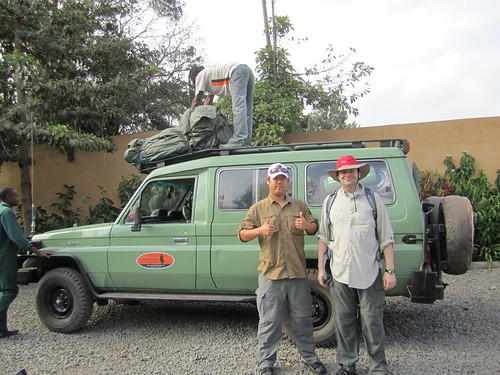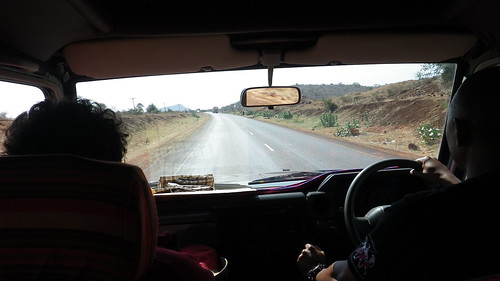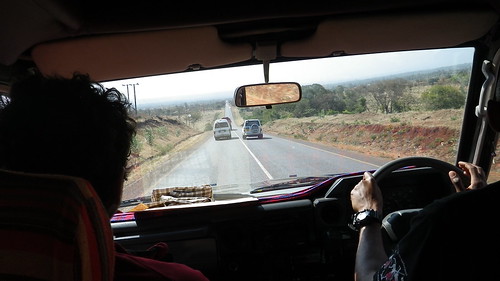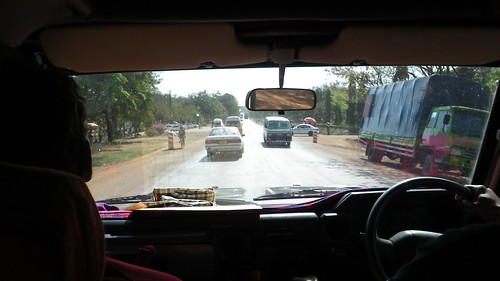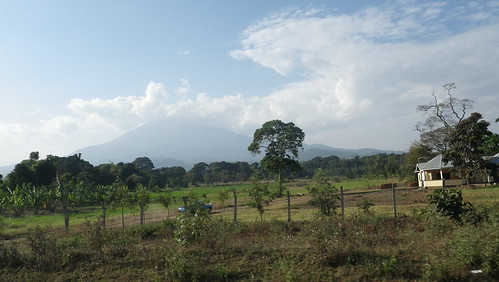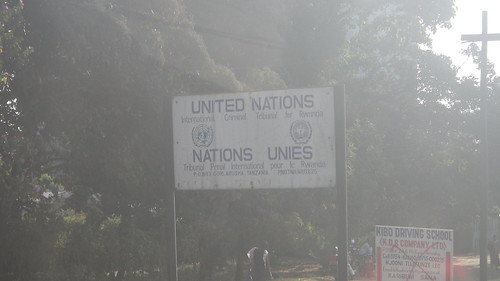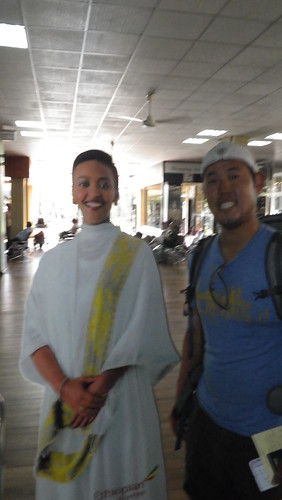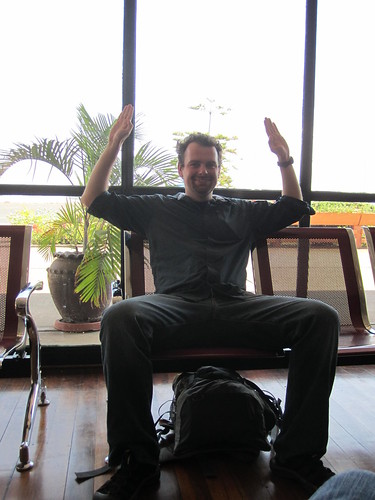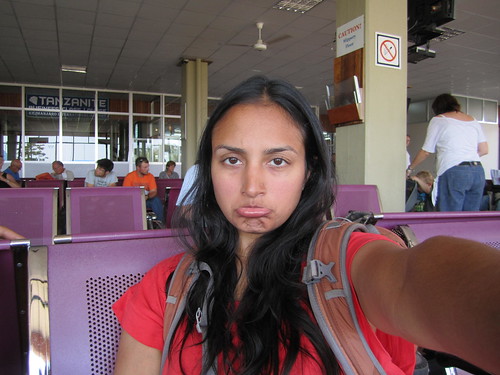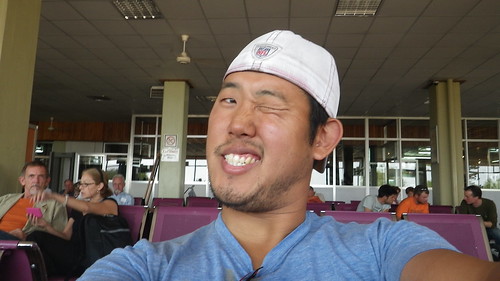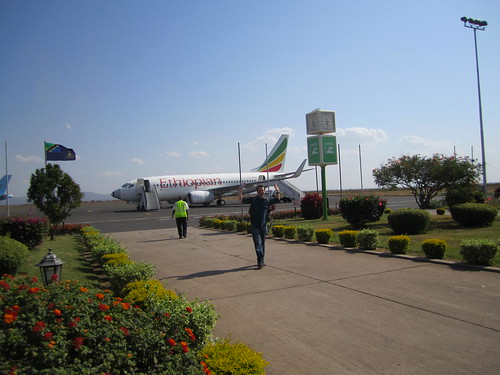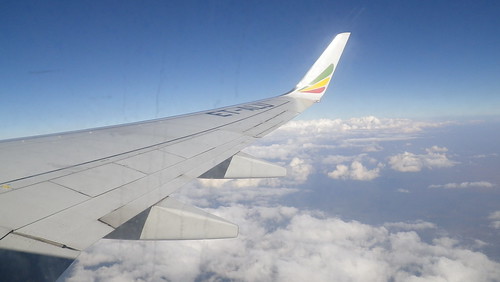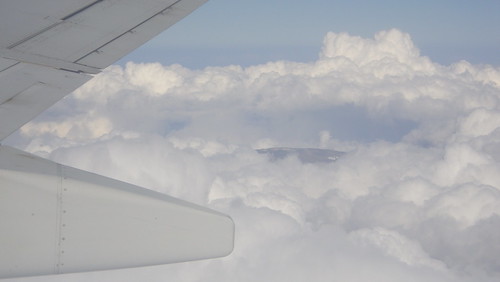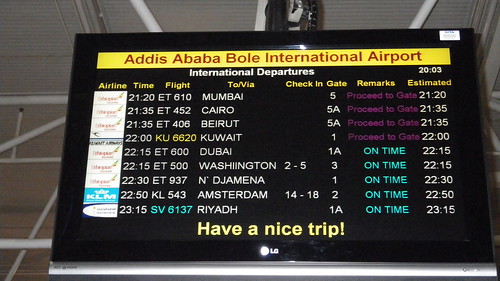... and the whiplash of culture shock... but not the kind you would assume when heading to the Middle East.
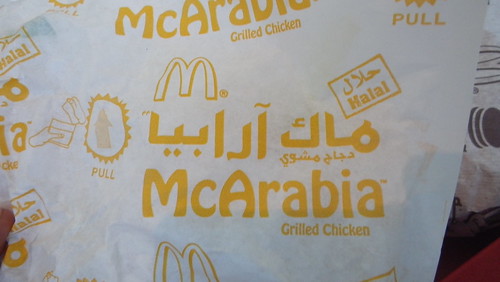
I'm sorry I've been delinquent in posting over the last... month. Life got busy, and quite frankly, I got a little burned out posting every week. Each one takes a good two to three hours. So, I figured the end of Africa was a good place "pause" for awhile. But to my dozens (ha) of readers, have no fear! The blog is not at an end, but at a new beginning! Although, I may go to the three times a month model to keep my sanity. Only time will tell.
Anyways, when we last left off, we had landed in Addis Ababa (again) and were dutifully waiting for our flight to Dubai. I covered why we chose to do our "winddown" in Dubai in a previous post. Having landed here before, our second time through was a bit less eventful, but not completely uneventful.
First, we tried to buy some Johnnie Walker. Now remember, we had gone through detox prior to the climb, to make sure we were able to do the climb. And of course, there was no spirits during the climb. For the kids, we'll chalk that up to not wanting to mix it with the Diamox. So, our only adult beverages were two beers we had imbibed at Ahadi Lodge after the climb. And since we had heard that alcohol was available, but not the easiest (or cheapest) thing to obtain in Dubai, we thought it might be prudent to "pre-purchase" a little.
Now, we had thought about buying some at the Kilimanjaro International. However, since we had already checked our bags, and we were transferring at Addis, we would have had to go through security again sans liquids (i.e., Johnnie in the trash). So, we decided there that any purchase would have to wait until Addis.
Unfortunately, while Addis did indeed have duty free stores with Johnnie, all their credit card machines (at three separate stores!) were non-operational. And while they of course accepted hard currency in form of the Ethiopian birr and U.S. dollars, for the former I didn't happen to have any lying around (and surprisingly, no one could direct me to an ATM), and for the latter, we had to settle our bill with Erica in cash since she didn't accept credit yet, which pretty much tapped us out. So that adventure did not end well.
Fortunately, our food adventure was more successful. As I said, we were out of cash, but after a few tries, we found a place that accepted credit cards. So, we were able to get a bite to eat (can't remember what) and buy some bottled water. Which, of course, we had to chug right before we went back through security as we boarded our plane to Dubai.
A relatively quick four hours later, we landed at Dubai International Airport.

Our first picture in Dubai. We probably took this because this was the first sign we sign we saw in Arabic. We're pretty sure it says Duty Free shopping. Stupid Americans.
Now, clearly we weren't in Africa long enough to have gone "native," but let me tell you... we were all a bit speechless when we landed in Dubai. First, well, we were tired. We landed at about 3:30AM, as our flight had actually landed 30 minutes earlier than scheduled. We slept a bit, but since the longest segment was four hours with a 2.5 hour layover in between, well, I take that back... we didn't sleep at all.
Second, we had sort of gotten used to single lane roads with potholes, power outages, sleeping on the ground, cramped spaces with people everywhere, and an airport with six flights a day. Well, when we were approaching Dubai International, we couldn't quite make out the city, but we could definitely see the airport. It was enormous. Ginormous. In fact, it is the 13th busiest in passenger traffic, 4th busiest in international passenger traffic, and 8th largest cargo airport in the world. In short, we would pretty much have been in awe even if we were coming from the States, and the fact that we were coming from Tanzania made it just that much more overwhelming.
(Photo courtesy of trekearth.com)
I didn't take the photo above, but I had to give you an idea of the sheer opulence we walked into. It was pretty awesome. And as we walked down the never-ending hallway toward immigration, we passed by the aforementioned duty free shop, which brings us back to Johnnie Walker. Apparently in Dubai, you are welcome to purchase duty free when you enter the country as well. Unfortunately for us, our brains were not working properly, so we missed that opportunity. C'est la vie.
Now, immigration was interesting. I guess I am used to airports in Europe and East Asia (and the U.S.) where U.S. citizens are sent to the long line, whether it be non-E.U. citizens in Europe, or just overburdened TSA staff in the U.S. trying to weed out Mexicans. So, when we saw the line with a lot of people, we assumed it was for non-UAE citizens, and having been used to being herded in that direction, we kind of went with the flow, as the security guards made fastidiously sure no stragglers got past them. As we got close, however, a security guard stopped us and asked where we were from.
Now, given the demonization of brown sand people in America, we sort of expected to be reciprocally hassled when we revealed our origin, so we sort of meekly replied "United States." When he heard our answer, however, his complexion changed from mild cautiousness to apologetic hospitality, as he frantically started gesturing "Americans? Oh no no no, this line is not for you. Please, come through. Your line is over there." And as we skeptically walked through, we realized our error. In Dubai, there is no non-UAE line and UAE line; there is an Africa line, and then the line for everyone else. The Africa line had about 200 people in it for four or five immigration officers behind glass (sort of like bank tellers), with the aforementioned security guards making very sure that no African "stragglers" got out. I guess everyone is trying to keep out someone.
The non-Africa line? Well, there was no line. There were about a dozen immigration officers literally doing nothing as we each walked right up to a separate one simultaneously. I didn't know it at the time, but this was actually the first (and actually one of only half-a-dozen) times that I would interact with an actual Emirati citizen. How did I know they were Emirati? Well, for that, I need to go a little bit into the lay of the land of where exactly we were.
The United Arab Emirates is, as the name suggests, a loose confederation of seven Emirates (basically Kingdoms) on the south side of the Persian Gulf that borders Saudi Arabia to the south and Oman to the east. Historically there were nine Emirates, but Qatar and Bahrain broke off at various points to form their own countries. And considering Bahrain is now a major international banking center and Qatar scored the 2022 World Cup over the U.S., their decisions seem to have borne out.
The largest and most powerful of the Emirates is Abu Dhabi. Like most of the Arabian peninsula, all the Emirates were relatively poor subsistence states until the discovery of oil, and Abu Dhabi, mostly due its size, has the lion's share of the reserves. Accordingly, its voice carries the most weight in the U.A.E.
Dubai is the second-largest Emirate, and thus the second most powerful. However, its economics are most interesting. Through sheer bad luck, Dubai ended up with very little oil. Not content to be left behind, however, the Al Maktoum family who runs Dubai leveraged what little oil assets they had into a huge real estate, tourist, and financial empire. Until the crash of 2008, they were extraordinarily successful, at one point possessing 1 in 4 of the world's construction cranes. Now, that may be a bit of exaggeration, but regardless of the actual percentage, to have that many cranes with such a small population is remarkable.
Which brings us back to my initial point about the Emirati. The U.A.E. is actually a pretty small country, having a population of just over 8 million people. For comparison, that's about the same as Sweden or New York City. But that is also deceiving, as only 16% of the population, or one in six, is actually an Emirati citizen. The rest are primarily guest workers, with the bulk being from India or the Philippines.
So, there are actually only just over a million Emirati, of which about a third reside in Dubai. And they are rich. Boy, are they rich. The total GDP of U.A.E. is about $183 billion dollars, which works out to around $37,000 per person. By comparison, the GDP per person in the U.S. is about $48,000. However, that $37,000 is deceiving because that assumes an 8 million population. Like I said, only 1 in 6 are citizens, and many of the guest workers are paid very poorly. Which means, that if we assume conservatively that only half the wealth in the country goes to actual Emirati, their per capita GDP is now well north of $100,000. And since Emirati families are rather large, well, you get the idea. These people are rich. So rich, in fact, that no Emirati citizen really has to work; they are guaranteed housing, health care, food, and basic transportation for life.
Which brings me back to my immigration officer. All immigration officers must be Emirati citizens. You can distinguish most Emirati citizens, at least those working in an official capacity, by the clothes they wear.
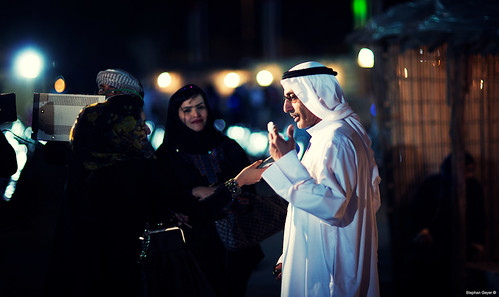
(Photo Courtesy of Stephan Geyer on flickr.com)
The man pictured above is your typical Emirati. I'll go into the nuances in another post, but suffice it say that if you see someone dressed like that, they are Emirati. The man who was my immigration officer dressed exactly like that, albeit much younger. Most Emirati headdresses will be white, unless you belong to one of the royal families. For that, your headdress will be patterned.
Additionally, I like the photo above because it gives a typical women Emirati dress as well - a black robe. Of the 12 or so immigration officers we had, one was a woman. Now, Westerners have a typical visceral reaction when they see women dressed like the above, assuming it is some subservient burkha that represses women's rights. While all such impressions undoubtedly have some kernel of truth, notice the lady above's rather stylish robe with gold trimmings, fancy handbag, and makeup. That is also very typical Emirati. While yes, we saw many women covered head-to-toe, we did not see many women who also covered their faces, and almost all the women were decked out to the nines. Without sounding sacrilegious, it was almost as if they found a loophole in the Islamic code saying "yes, we will cover ourselves in all black, but the Koran says nothing about accessories." And accessorize they have. More on that later.
Now, remember I said that Emirati do not have to work - the government takes care of their basic needs. But, remember I also said that all immigration officers must be Emirati citizens. As you can imagine, this sort of places the government in a conundrum. So, how is it our immigration officer was Emirati? I found out later that basically, these guys do this for fun. Yes ladies and gentlemen, my immigration officer was working at the airport at 4AM stamping my passport because he was bored and needed a hobby (and I am guessing also a bit of patriotism). Un...be... lievable. Gives new meaning to the word slumming.
Anyways, I walked up to the guy and handed him my passport. In perfect English, he asked me basic questions (where was I coming from, where was I staying, how long, etc.) and without another word, disinterestedly stamped my passport and waived me through. I think I was there for like 45 seconds. Greatest. Immigration. Experience. Ever. As I walked through, Resha and William were waiting for me, also in kind of a daze as to say "really, that's it?" Not wanting to press our luck, we marched on to gather our luggage.
From there, we caught a cab to our destination - the Oasis Beach Tower at the Dubai Marina.
I'll go into how we chose that hotel and part of town to stay in a future post, but suffice to say that it's next to the infamous Palm Jumeirah (Palm Tree Island). Anyway, the drive there was very uneventful, which is to stay, another culture shock. Again, having gotten used to the dirt roads of Africa, we found ourselves on probably the most modern ten-lane highway I have ever seen, passing skyscraper after skyscraper for what seemed like forever. As we turned into Dubai Marina development and up to our hotel, the sheer amount of concrete overwhelmed once again, as we were in awe.
For what will follow next, I need to explain a little about the hotel. Initially, it wasn't the cheapest place, but we figured we needed a little indulgence after Africa. Still, I found a good rate at what is a four star place, but to save some bucks, I actually didn't have us checking in until the following afternoon. Since we were supposed to land at 4AM, I figured it would take us awhile to get through immigration, get our bags, and get to the hotel, so maybe they could let us in early. It turned out that we arrived at 4:30AM. Oops.
So, we got out of the cab, and almost immediately two porters came to get our stuff. Again, impressive for 4:30AM. As we walked up in a disheveled state to the understandably not busy counter, a South Asian man greeted us friendily, if a bit hesitantly. We soon learned he was the manager.
- Manager: Good morning sir. How can I help you?
- Me: Good morning. We have a reservation under Michael Kim.
- Manager: (After some keyboard clicking) Yes! I see your reservation here. (Worried frown forming on his face). However, it says you are not supposed to arrive until tomorrow.
- Me: Yeah, we thought we would be getting in on a later flight (lawyereese, I know). Is there anyway you could let us into the room earlier?
- Manager: (Pensive expression) Well, your reservation is for tomorrow, so I'm afraid that room is not ready. We are happy to let you in early, but I really cannot let you have the room now.
- Me: I understand. We would be willing to pay, if that is possible.
- Manager: (Face brightens) But, of course. (Points to room rates). As you can see, our nightly rate is $1,500 (6,000 UAE dirhams). But I would happy to let you have it for $1,000 since it is so late.
- Me: (Pretending to contemplate it while simultaneously swallowing my wallet). Um, yeah, I think that is going to be a bit expensive for us.
- Manager: (Back to worried frown). I see. (Nervously thinks a bit). Well, if you are willing to wait a bit, I could probably let you into the room by 9AM. Possibly 8.
- Me: (Breathing again). That would be fine.
- Manager: (Happy again). Wonderful. (Does some keyboard clicking. Comes back with a worried expression). I am really sorry I cannot accommodate you now. I hope you understand.
- Me: No worries man. I get it. You are running a business.
- Manager: (Apologetic expression now). Tell you what. I can let you have it for $500 now.
- Me: Naw, that's cool. 9AM would be great. Thanks.
- Manager: And thank you sir. I will make sure your bags are sent to your room as soon as it is ready. And please, let me once again extend my apologies.
And with that, he pointed us in the general direction of some things to see in the neighborhood, and I went back to Resha and William. At first, they were understandably disappointed when I relayed the situation, since we were all so tired, but after mentioning the cost, they perked up with a "four hours of discomfort is worth $1,000." And we were off.
After meandering a bit, we ended up at the main beach for the marina. Even though it was so early, there were people walking the beach, and even a few cars (beamers and benzes) parked on the beach, with people looking at the ocean.
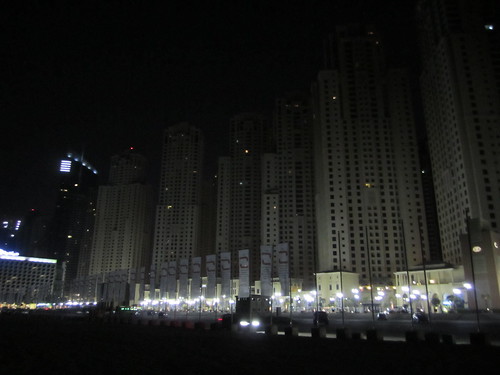
This is a picture from the beach looking back at the hotels and condos on the beach. Crazy huh?
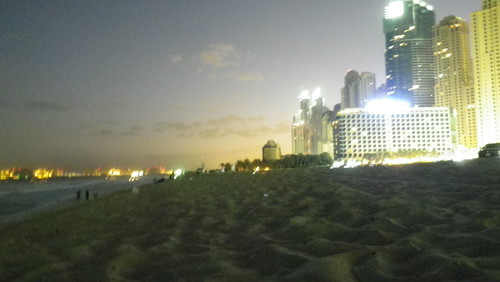
This is the view down the beach with some exposure.
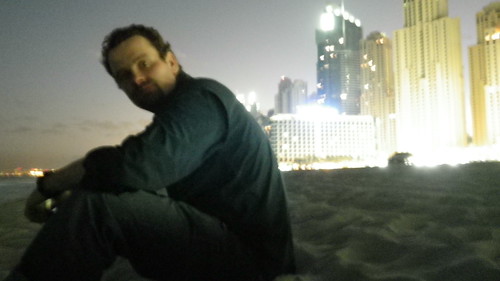
William, trying not to fall asleep.
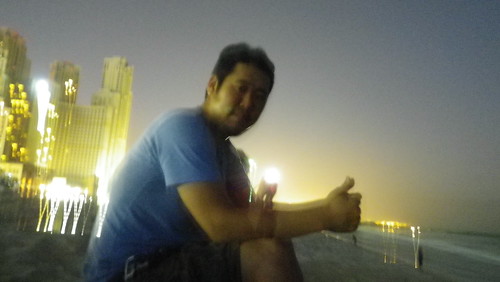
Me, trying not to fall asleep.
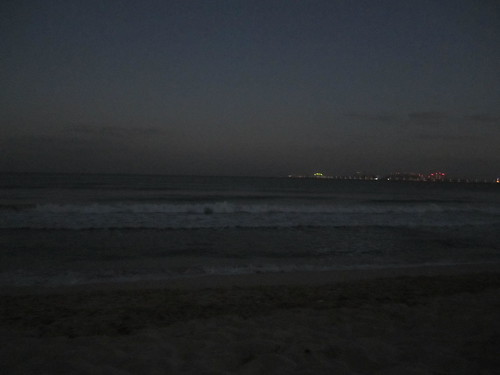
The Persian Gulf. With Iran lurking on the other side. Also crazy. The lights you see in the distance are the buildings and hotels on Palm Jumeirah. At this point, we couldn't resist dipping our feet in the water to say we had touched the Persian Gulf, so we did. It was really warm. And salty.Very salty.
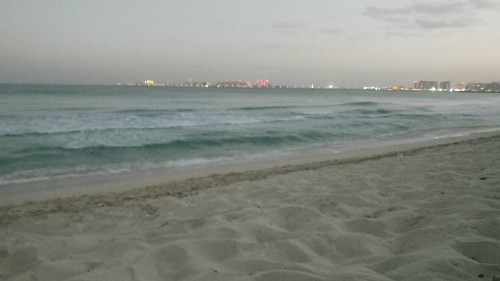
Getting light over Palm Jumeirah.

Getting light over the Marina.
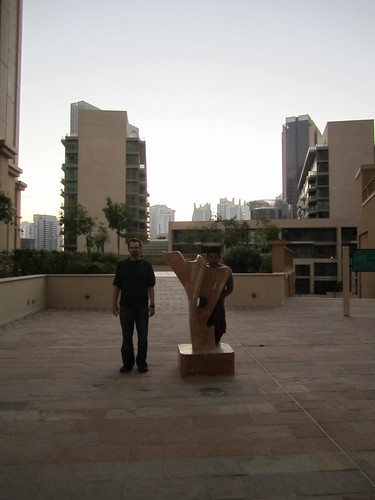
To fight off fatigue even more, we wandered around the condo and hotel plazas around the Marina.

A picture of the Al Maktoum family on the windows. Their pictures were everywhere.
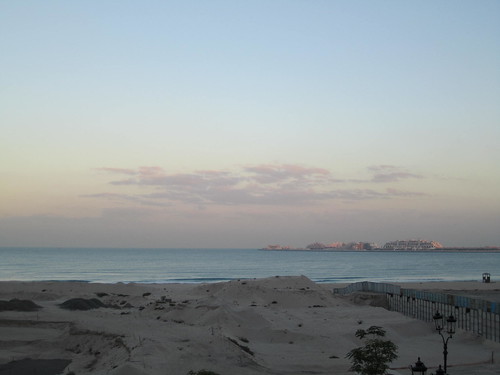
Looking down at the Palm Jumeirah from a slightly elevated viewpoint; technically the Hotel Atlantis is in the distance. Immediately below us was an old resort that had closed and/or was undergoing renovations; hard to tell which was which.
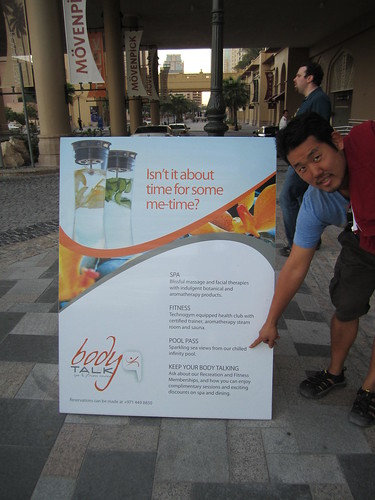
Chilled water pools looking over the Gulf. Bad-arse.
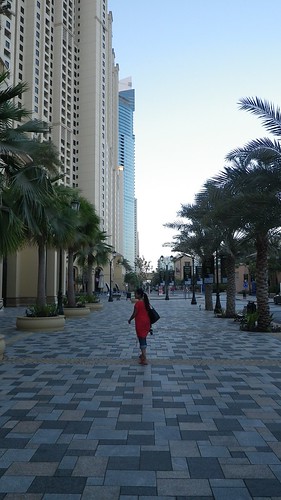
Resha walking down the ridiculously opulent streets. Each stone in perfect place.
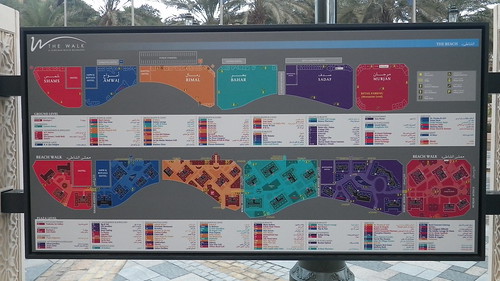
A map of the Marina development.
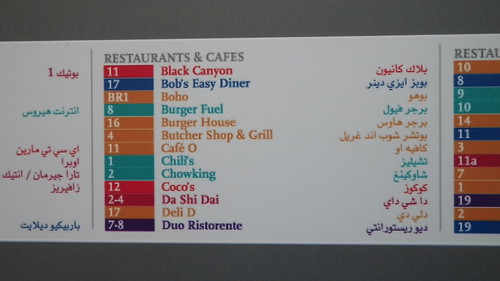
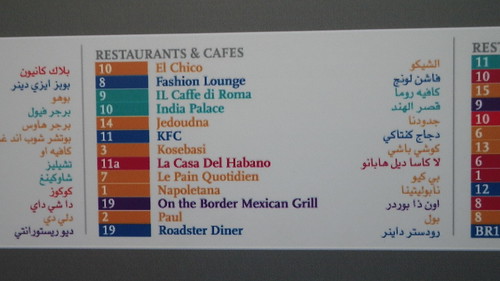
Every type of food known to man. Including Mexican!
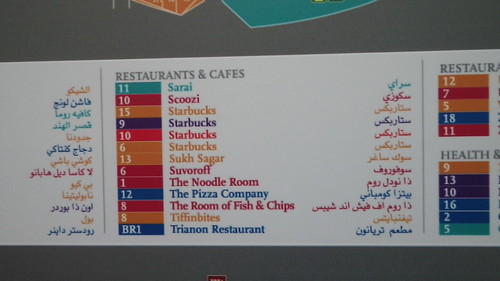
And Starbucks. Lots of Starbucks. More on this in a future post as well.
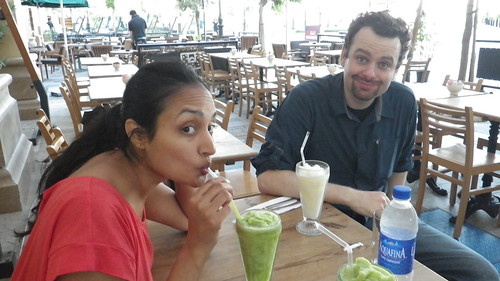
At some point, we decided eating would be a good way to kill time, so we found a Middle Eastern equivalent of an Au Bon Pain that had just opened. Pretty much everywhere else was understandably closed. We were clearly its first customers. Resha got some sort of mint smoothie. I have no idea what William is drinking.

A lamb sausage (no pork - this is the Middle East after all) over eggs. It was actually kind of rubbery, but I was in no condition to complain.
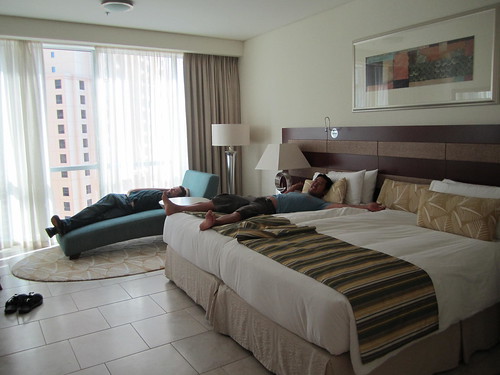
After breakfast, it was about 8AM, so we made our way back to the hotel. The manager enthusiastically greeted us, informing us that our room was definitely ready. His assistant than took us up, gave us a rather lengthy tour and intro of the room, and then left. Sleep. At last.
Until next week...


